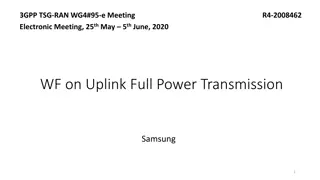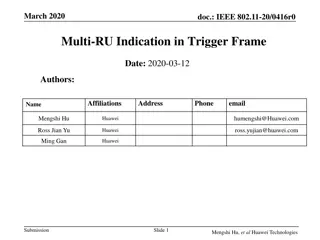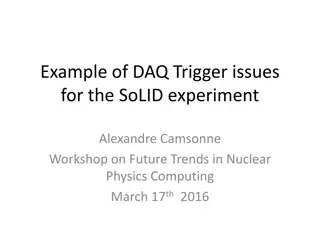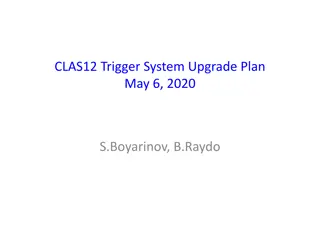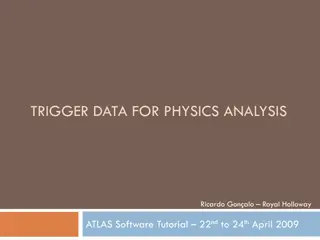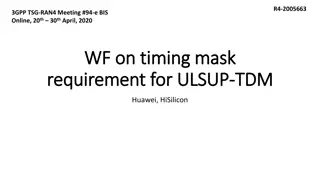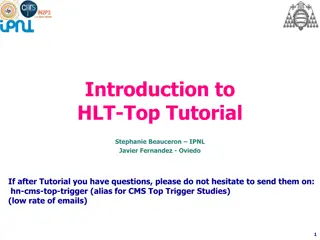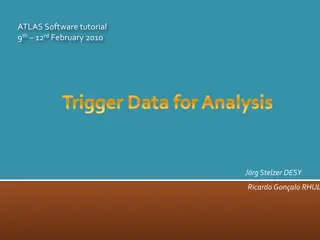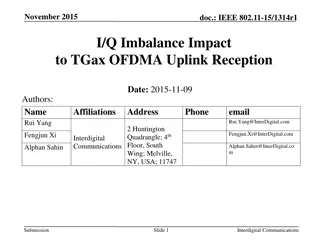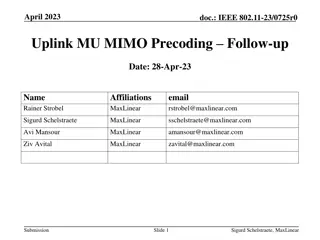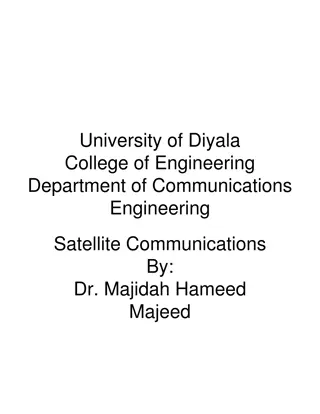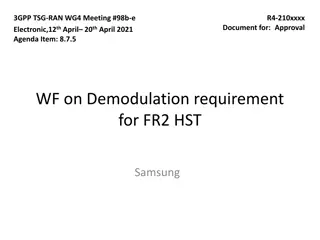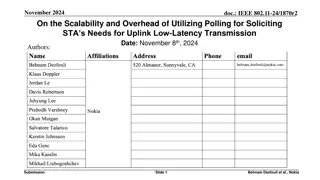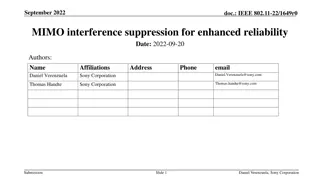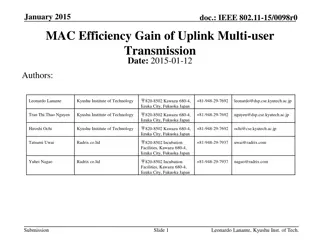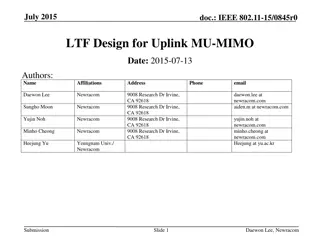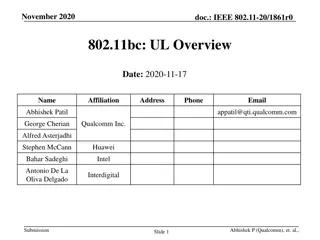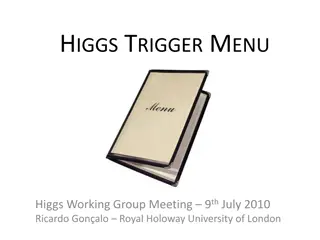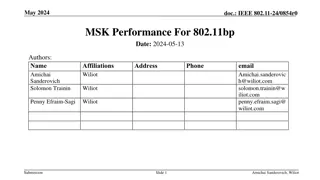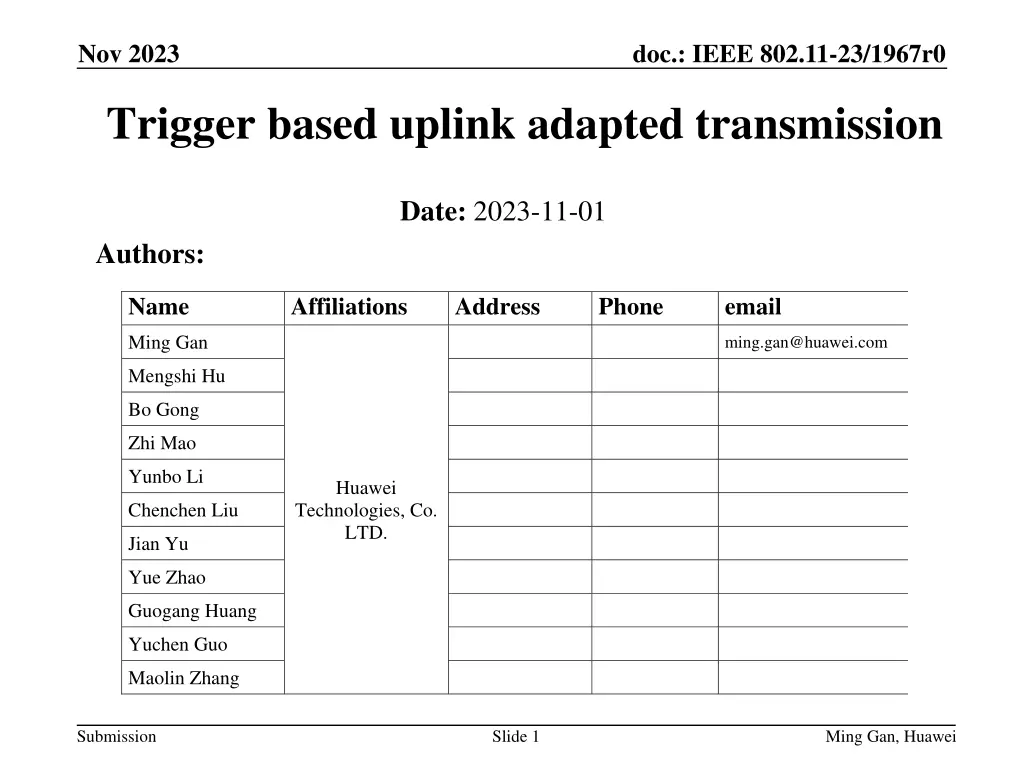
Trigger-based Uplink Adapted Transmission in IEEE 802.11-23
Revisit the trigger-based uplink adapted transmission feature in IEEE 802.11-23 to enhance spectrum utilization for large bandwidth uplink transmissions. Addressing issues related to wasted resource units, the proposal suggests allowing STAs to respond with TB PPDU on part of MRU based on CCA results for efficient usage of available resources.
Download Presentation

Please find below an Image/Link to download the presentation.
The content on the website is provided AS IS for your information and personal use only. It may not be sold, licensed, or shared on other websites without obtaining consent from the author. If you encounter any issues during the download, it is possible that the publisher has removed the file from their server.
You are allowed to download the files provided on this website for personal or commercial use, subject to the condition that they are used lawfully. All files are the property of their respective owners.
The content on the website is provided AS IS for your information and personal use only. It may not be sold, licensed, or shared on other websites without obtaining consent from the author.
E N D
Presentation Transcript
Nov 2023 doc.: IEEE 802.11-23/1967r0 Trigger based uplink adapted transmission Date: 2023-11-01 Authors: Name Affiliations Address Phone email Ming Gan ming.gan@huawei.com Mengshi Hu Bo Gong Zhi Mao Yunbo Li Huawei Chenchen Liu Technologies, Co. LTD. Jian Yu Yue Zhao Guogang Huang Yuchen Guo Maolin Zhang Submission Slide 1 Ming Gan, Huawei
Nov 2023 doc.: IEEE 802.11-23/1967r0 Background A few key features are left out from 802.11be Multi-AP, A-PPDU, non-primary channel access, trigger based uplink adapted transmission, distributed RU and so on Some of them were proposed in UHR study group again, like multi-AP In this contribution, we reconsider the feature-trigger based uplink adapted transmission It is promising feature to boost spectrum usage, especially for large bandwidth uplink transmission The required change is relative minor Submission Slide 2 Ming Gan, Huawei
Nov 2023 doc.: IEEE 802.11-23/1967r0 Problem with trigger based uplink transmission In [1] and [2], they both mentioned the following issue for trigger based uplink transmission The assigned RU/MRU will be wasted if only one portion of it is busy Take the following transmission for example, the whole 996+484 tone MRU at the STA 1 will be wasted just because 484 tone RU is busy. STA 1, 996- tone Idle Trigger 160 MHz STA 2, 484- tone STA 1, 484- tone Idle busy Submission Slide 3 Ming Gan, Huawei
Nov 2023 doc.: IEEE 802.11-23/1967r0 Trigger based uplink transmission Since CCA is 20 MHz based, for RU/MRU less than 242-tone, this issue can t be addressed However, for large RU/MRU, the issue mentioned in slide 2 could be addressed. The suggested way is to allow that the STA respond with the TB PPDU on part of RU/MRU based on CCA results. Submission Slide 4 Ming Gan, Huawei
Nov 2023 doc.: IEEE 802.11-23/1967r0 Trigger based uplink transmission For the following RU/MRU greater than 242-tone, there are many combinations for available RU/MRU that exclude busy 242-tone RU Recommend to consider limited combinations, such as when the CCA for large RU within RU/MRU is idle. On the other hand, keeping the existing TB PPDU format, including same U-SIG per 80 MHz, should be taken into account when the solution is developed. RU/MRU greater than 242-tone 484+242-tone 996+484-tone 996+484+242-tone 2*996 2 996+484-tone 3 996-tone 3 996+484-tone 4 996-tone Other RUs: 484-tone and 996 tone Submission Slide 5 Ming Gan, Huawei
Nov 2023 doc.: IEEE 802.11-23/1967r0 Summary In this contribution, we promote the feature-trigger based uplink adapted transmission. It could make full use of the available RU within assigned RU/MRU for uplink transmission Submission Slide 6 Ming Gan, Huawei
Nov 2023 doc.: IEEE 802.11-23/1967r0 References [1] 11-20-0413-01-00be-discussion-on-eht-trigger- based-ul-mu [2] 11-20-1886-01-00be-ru-adaptation-in-tb-ul-mu- transmission Submission Slide 7 Ming Gan, Huawei

